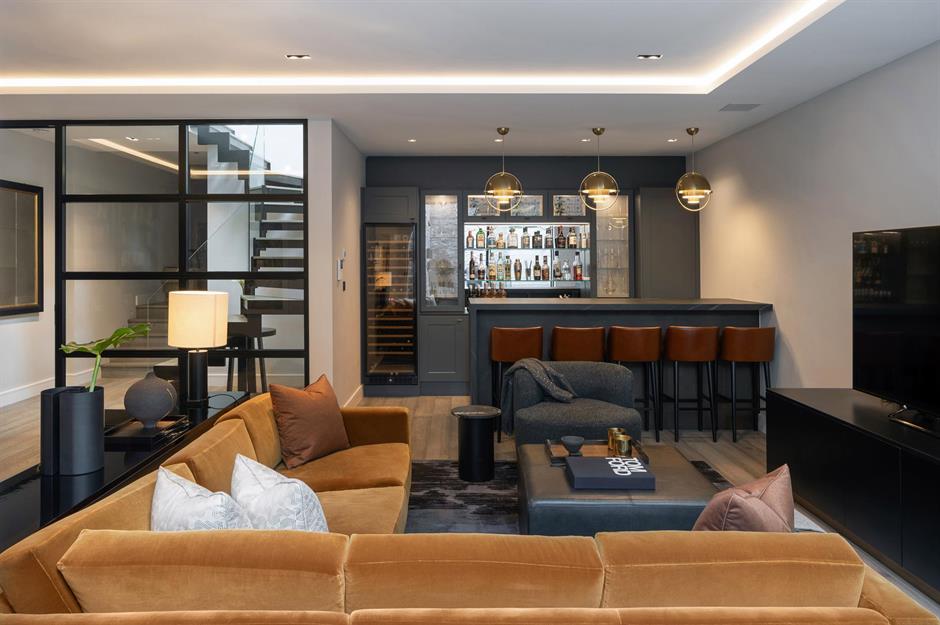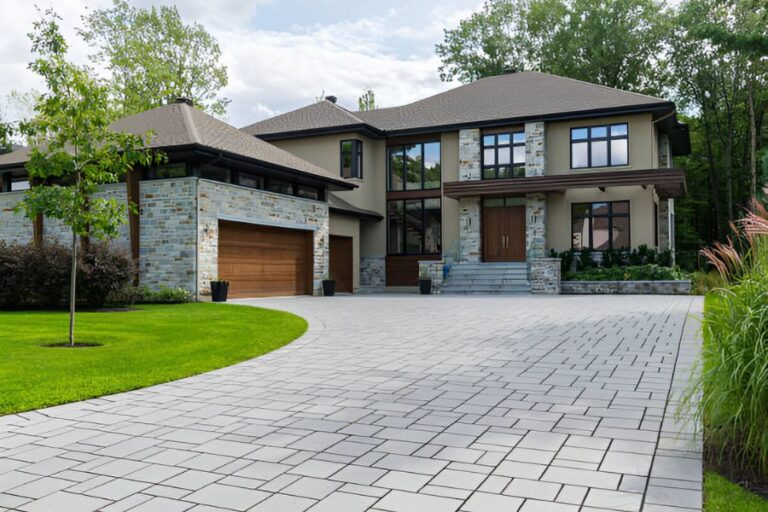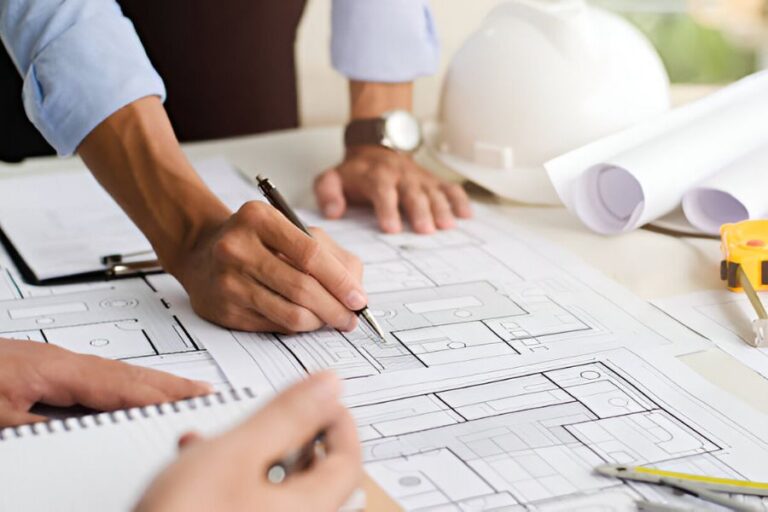Future-Proofing Your Custom Home: Design Elements for Aging in Place
When future-proofing your custom home for aging in place, you’ll want to focus on design elements that enhance accessibility and independence. Start by ensuring barrier-free entrances with step-free access and non-slip floors. Widen your doorways and hallways to at least 36 inches and 42 inches respectively, making room for easier mobility. Incorporating smart home technologies can streamline household operations with voice-activated devices and automated lighting. Don’t forget about the kitchen and bathrooms—adjustable countertops and walk-in showers are essential. These practical updates can enable you to live comfortably and safely in your home long-term, and there’s plenty more to reflect on that can further tailor your space to your future needs.
Barrier-Free Home Entrances
When designing a home for aging in place, ensuring barrier-free entrances is essential. You’ll want to focus on creating accessible entry points that accommodate everyone, regardless of mobility level. This means considering step-free access from the driveway or sidewalk into the home. You can achieve this with ramps that have gentle slopes, ideally a 1:12 ratio for ease of use with wheelchairs.
Moreover, it’s wise to install non-slip flooring at all entrances. Materials like textured tile or rubber can prevent slips and falls, which are common hazards. Another key element is sufficient lighting around the entry area. Bright, clear lighting not only enhances safety during evening hours but also aids those with impaired vision.
Don’t forget about door thresholds too; they should be flush with the ground to eliminate tripping hazards. Additionally, consider the placement of door handles and locks. Lever-style handles, which don’t require twisting or grasping, are easier for hands that might not be as dexterous as they once were.
Wider Doorways and Hallways
Continuing with the theme of accessibility, it is vital to expand doorways and hallways within your home. Wider doorways and hallways aren’t just about convenience; they’re a proactive approach to guarantee your home remains safe and accessible as you age. Typically, doorways should be at least 36 inches wide to accommodate mobility aids like wheelchairs and walkers comfortably. This adjustment allows you to move freely without the risk of injury or difficulty.
Similarly, hallways should be broadened to at least 42 inches. This width guarantees that there’s ample space for turning and maneuvering, especially significant in emergency situations or when using larger assistive devices. It’s not just about fitting these aids through; it’s about doing so with ease and safety.
Think of these modifications as an investment in your future independence. By integrating wider doorways and hallways into your home design now, you’re setting the stage for a safer, more comfortable living environment as your mobility needs evolve. Plus, these enhancements can improve the overall flow and feel of your home, making it a more inviting space for everyone who visits.
Smart Home Technologies
Smart home technologies often revolutionize how you interact with your living space, particularly as you age. These systems can offer you unparalleled convenience and enhanced safety, making them ideal for aging in place. Imagine adjusting the thermostat, locking doors, or turning off lights—all without having to move more than a finger. This isn’t just about comfort; it’s about maintaining your independence and safety as mobility becomes more challenging.
Voice-activated devices can help you control your environment effortlessly. You won’t have to struggle with small buttons or switches that can be a hassle, or even a risk, as you grow older. Automated lighting systems guarantee you never have to walk into a dark room, reducing the risk of falls. Similarly, smart security systems provide peace of mind without the complexity of traditional systems, which can be confusing and difficult to manage.
Consider also a smart health monitoring system. These tools can keep an eye on your well-being and alert you or your loved ones in case of unusual patterns or emergencies. Integrating these technologies into your home isn’t just a luxury; it’s a practical approach to guaranteeing your home meets your needs at every stage of life, safely and comfortably.
Adaptable Kitchen Designs
Adaptable kitchen designs transform your culinary space into a versatile and safe environment, especially as you age. These innovative layouts focus on accessibility and ease, guaranteeing that you can enjoy cooking without stress or strain. Begin with adjustable countertops; they can be raised or lowered with just a push of a button, accommodating both standing and seated positions. This feature not only helps in preventing back pain but also makes the kitchen more user-friendly if you’re using a wheelchair or mobility scooter.
Next, consider installing drawers and cabinets with easy-pull handles and slide-out shelves. These modifications mean you won’t have to stretch or strain to reach your kitchen essentials. Opt for a shallow sink with a hands-free faucet to minimize bending and simplify tasks.
Lighting is essential; confirm that your kitchen is equipped with bright, non-glare lights to enhance visibility and reduce the risk of accidents. Place them strategically over work areas and along pathways.
Safe and Accessible Bathrooms
Just as in the kitchen, making sure your bathroom is safe and accessible is vital for aging in place. You’ll want to reflect on modifications that cater to ease of mobility and minimize risks. Start with a walk-in shower, which eliminates the need to step over a tub edge, reducing the chance of falls. Slip-resistant flooring is a must-have; ceramic tiles can be treated with a non-slip coating to guarantee stability.
Here are a few key modifications to reflect on:
| Feature | Description | Benefit |
|---|---|---|
| Grab Bars | Installed by the toilet & in the shower | Provide support and stability |
| Higher Toilet Seat | 17-19 inches high | Easier to sit and stand |
| Handheld Shower | Adjustable height | Accessible from any position |
Incorporating these features not only makes your bathroom safer but also more comfortable as you age. Don’t forget good lighting—it’s essential for avoiding accidents. Opt for bright, glare-free lights to illuminate the entire space evenly. Remember, creating a bathroom that caters to your future needs doesn’t mean compromising on style. Today’s market offers plenty of options that are both chic and functional.



